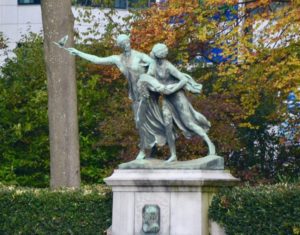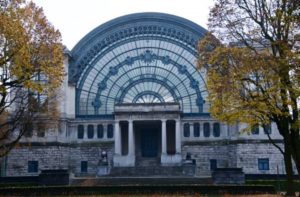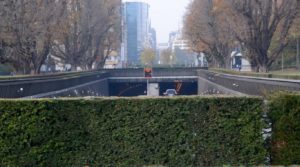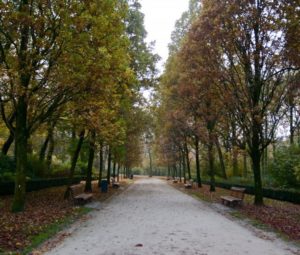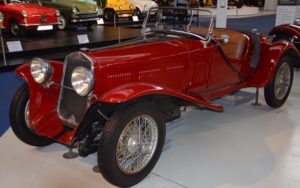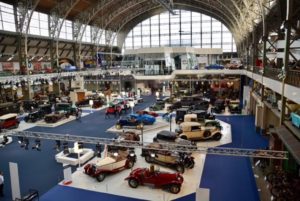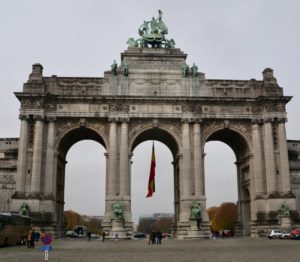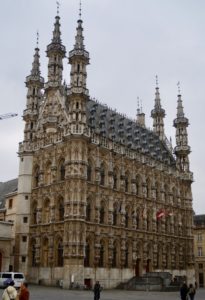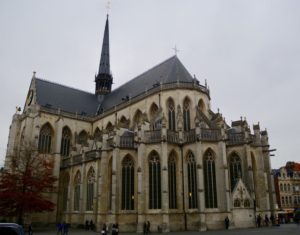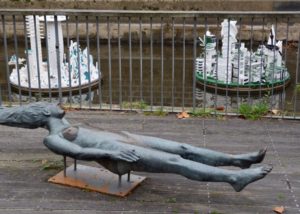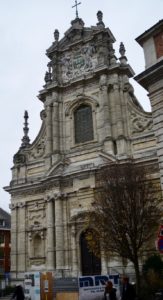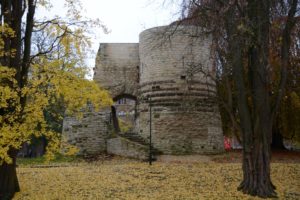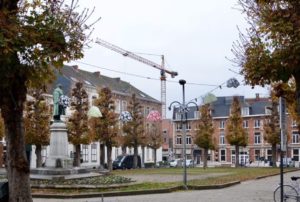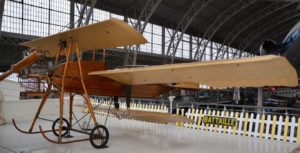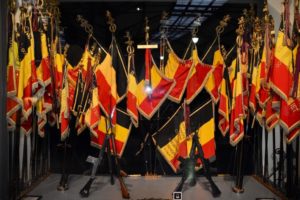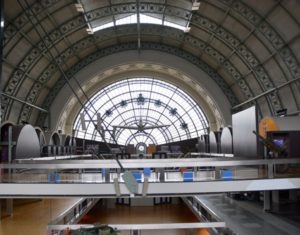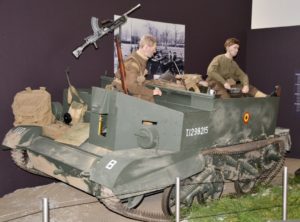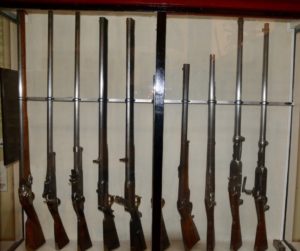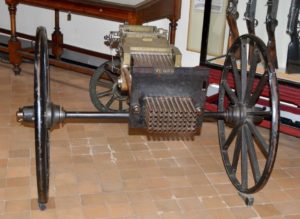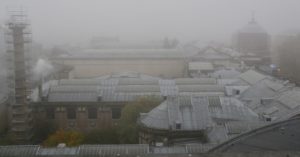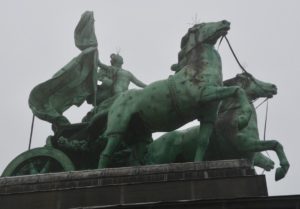Monday 14 November 2016
After a relaxing Sunday in DC we caught the overnight flight to Brussels. Having spotted a huge arch from the taxi on the way into town I decided to go and investigate. After short stroll from the hotel I came across Parc Cinquantenaire, or “Park of the Fiftieth Anniversary”
Most buildings of the U-shaped complex which dominate the park were commissioned by the Belgian government under the patronage of King Leopold II for the 1880 National Exhibition commemorating the fiftieth anniversary of Belgian independence. The centrepiece triumphal arch was erected in 1905 replacing a previous temporary version of the arcade by Gédéon Bordiau. The structures were built in iron, glass and stone, symbolising the economic and industrial performance of Belgium. The surrounding 30-hectare park esplanade was full of picturesque gardens, ponds and waterfalls. It housed several trade fairs, exhibitions and festivals at the beginning of the century. In 1930 the government decided to reserve Cinquantenaire for use as a leisure park. (Thanks Wikipedia)
Just past the arch on the right is a car museum and on the left a military museum which is closed Monday. The car museum was established in the 1980s with the initial exhibits coming from a private collection. It has an amazing collection of vehicles dating from the late 1800s. Included is a replica of the Jamais Contente 1889 electric car, the first car capable of 100kph. Apparently around that time there was some debate as to whether cars would be combustion or electric. Just imagine the visual pollution of power lines if they had gone electric!!
I headed east from there looking back at the arch and past a fountain to the local metro.
On the flight from DC a lady sitting next to had said Leuven, 20kms east of Brussels, was well worth a visit. I couldn’t work out how to catch a train from Merode so I caught the metro back to Madi then the IC (Inter city) train from there. At the end of the line I arrived in this lovely town- the home of Stella Artois. Badly damaged during both world wars it has been rebuilt in its original form. Two massive churches stand side by side in the centre with many others dotted around the town.
Even a new hotel has been built in a gothic style.
A stroll through to the other side of the town revealed some old tax collecting gates.
Some strange looking pieces of art drifted in a local creek
The university was in a very old building with a large abandoned church across the road.
A very old ruin sat in a nice park abandoned for hundreds of years. Little parks are prominent throughout the town.
The lady on the plane was right it is a lovely town. It is truly outstanding the way these people are able to rebuild their city’s and towns to their original state in spite of the devastation they suffered.
Tuesday 15 November 2016
We woke to a foggy, wet day so I jumped on the metro back to the arch to check out the war museum. Established in 1880 this place houses an array of military artifacts. I headed first into the aviation pavilion. There are so many aircraft in this huge area that some are stacked up on poles or suspended on wires.
There is a section on airships with some burnt out cockpits on display. Its a must visit for one with an interest in aviation.
The next section on early European military is rather cluttered as though they have tried to cram in every exhibit they have from the era.
At the back is an exhibition on WWII with bunkers and command centres set up. A German V1 rocket is suspended in the centre of the huge pavilion.
That last hall contains a really well done section on the evolution of firearms. Each cabinet has a detailed description of how the guns inside evolved. From early flintlocks with a range of two hundred metres and a rate of fire of two to three rounds a minute, subject to fouling and misfires, to the invention of cartridge guns with a range in excess of a thousand meters and a rate of fire exceeding 20 rounds a minute.
Belgium has been a leader in the evolution of small arms over many centuries. Many innovations were first used by hunters before being adapted by the military.
One interesting piece is the volley gun. Although used in various forms back as far as the sixteenth century, in 1867 a Belgium gunsmith constructed a volley gun with 37 barrels and pre loaded plates that could fire 296 rounds a minute with a range of 1500 meters.
These were soon superseded by the Gatling gun and then the Maxim gun firing 500 rounds per minute.
The next section is a great display of armour and a good video on the evolution of the art of fencing. There is also a section on old matchlocks which first appeared in the fifteen hundreds.
Early canon balls crafted from stone and fired by a catapult were also on display.
In the back corner I found a stone spiral staircase. This lead to an attic full of more exhibits.
Heading up the wooden stairs in the attic a door took me out onto the roof of the arch. With thick fog over the city visibility was limited but I am sure on a clear day the views from here would be stunning.
I took the metro back to the hotel do do some photo sorting and writing before catching the train to the airport to meet Sylvia for our flight to Madrid.


